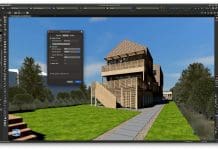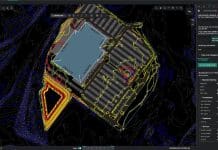Richard Shennan, digital delivery director at Mott MacDonald discusses the importance of a Common Data Environment (CDE) as an essential element of collaborative working
Common data environment was put firmly in the foreground as a result of the work in the UK in developing the PAS 1192 series, founded on the thinking in BS 1992:2007 (yes that long ago).
This, in turn, became a key part of ISO 19650, the international standard for managing information over the whole life cycle of a built asset using Building Information Modelling (BIM).
While the language has moved on with the widespread adoption of Digital Twin terminology, the essential requirement for a single, accurate digital representation of an infrastructure asset or wider system remains.
It now has even greater importance as the potential for through-life system performance optimisation and adaptation has been enhanced by new data feeds such as internet of things devices, and contextual data.
The fundamentals
Efficient collaborative working requires everyone to be looking at the same information and to understand its status and the purpose for which it has been approved for use at any given time, as well as keeping a record of all transactions.
This was largely met by managing information exchange through files and building workflows that ensured that they passed across the core status boundaries of work in progress, shared and published with the right authorisations and the right metadata regarding status.
Technology developments enabled file formats for design work to increasingly align with BIM best practice, leading to improved co-ordination and efficiency gains where properly implemented. While developments in technology and increase in adoption of best practice continue apace, the next generation of CDE is already visible.
Leading thinkers in BIM have long argued that it is the information, the ‘I’ in BIM (or GIS) that is central to its value. In a file-based Common Data Environment, data can be added into applications that also have strong geospatial functionality and can be shared from there for new purposes.
However, the basic building block is data, and the trend is towards data-centric CDE. This opens up the potential for digital asset information to mirror the physical asset, whereby a new project is effectively an intervention to an existing system, to meet a new demand connected to enhanced social outcomes.
The ultimate digital asset
The data CDE contains will belong to the owner, and that owner would commission delivery of a data set that provides all relevant information about the new physical intervention to allow it to be incorporated into the system and operated, maintained and adapted over its lifecycle. Different technology applications will draw upon that single source of truth for a multitude of purposes over time, but it is the data that becomes the thing to organise and collaborate around rather than files that would only ever relate to a sub-set of the complete range of purposes to which the common data can be applied.
The movement towards a data-centric approach will be accelerated by the increasing understanding of the potential value of digital twins in getting the most out of our built environment systems. A digital representation of an asset, with permanently connected data flows back from the physical asset, can optimise its operation, extend its value, adapt to changing demands and support decisions about potential new interventions.
Once value has been rightly attributed to information, enterprises will see the need to organise the data that feeds that information and ensure that is always current, available to all that need to make reference to it, where and when they need it through secure cloud technology. The purpose for which the data can be used, and its provenance in terms of supplier, will form part of the data set, complete with geospatial reference data of sufficient detail to allow assets to be located and tasks planned.
Digital Twin mentality
Digital Twin thinking is driving the shift towards data-centric CDE with ultimate ownership aligned with that of the physical assets. During the design and construction stages of a new capital investment, the CDE will be the place where the new digital asset is developed, with the ultimate objective of handing it over alongside the physical asset to be integrated into the existing system and its digital twin.
Owners will set out their information requirements with this objective, and procurement will develop so that all relevant project participants, from designers to specialist contractors, fabricators to manufacturers, can supply information as required in sequence along the project timeline. Each participant will input the information that they are best suited to provide, with BIM technologies deployed for collaboration and co-ordination.
The common data set will build alongside the physical intervention and be subject to inspection and valuation just as the physical works in progress are. The digital handover information will be drawn from it, comprising the data needed to optimise the following lifecycle stages.
This data-centric approach to CDE is already generating investment and development activity, from consultants and contractors who were quick to recognise the potential, to digital innovators and BIM technology suppliers.
At Mott MacDonald our integrated Smart Infrastructure and Augmented Delivery propositions are connected through Moata, our digital twin platform, to enable owners to take control of their data and put it to work. Data-centric CDE is central to the fulfilment of the promise of digital transformation to make a meaningful impact on the enhanced social, economic and environmental outcomes that we all have a responsibility to deliver.

Richard Shennan
Digital delivery director














